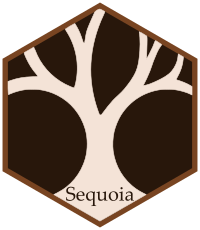Sequoia User Guide
Reconstruction of multi-generational pedigrees from SNP data
4 April 2023
Preface

Development of sequoia began in 2014, when the rum deer project received a grant to SNP genotype all 2,500 sampled deer, and hired me as a postdoc.
The pedigree reconstruction programs I could find back then were limited to parentage assignment and sibship clustering, relied on error prone lists of candidate parents and/or candidate siblings for each individual, and were originally designed for microsatellites, relying on very powerfull but very slow MCMCs.
Reconstructing the pedigree using Colony, running the 40 birth year cohorts 3 at a time in a sliding window and then puzzling the results together, was likely to take a couple of months. Each run took a few days, and combining the runs was far from straight forward due to false positive and false negative assignments.
Moreover, Colony sibship clusters are not connected to the rest of the pedigree. The very first prototype of sequoia was an R function to identify individuals that were second degree relatives (\(R_{GRM} \approx 0.25\)) to an entire sibship, and that based on their age were likely to be the grandparent. When I could not find a good threshold to distinguish between grandparents and other kinds of relatives, I delved into the literature and came to realise a likelihood-based approach would be much better.
I became convinced that with 40,000 polymorphic SNPs, it should be very obvious if and how individuals were related, and that highly accurate pedigree reconstruction should be possible. Theoreticians had shown this and developped very fast methods, but these assumed that all individuals were sampled at all SNPs, often no genotyping errors, and definitely no close inbreeding.
Naively, I thought that in the couple of months it would likely take with Colony, I could write a program myself to reconstruct a pedigree from real data. I had some knowledge of Fortran from my MSc in animal breeding, and started coding.
It took a bit longer than a few months to get the first version to work adequately, but I enjoyed the process so much that sequoia has kept growing and developping ever since. It has helped to reconstruct pedigrees in a wide variety of plants and animals, and I hope it will continue to do so for many more.